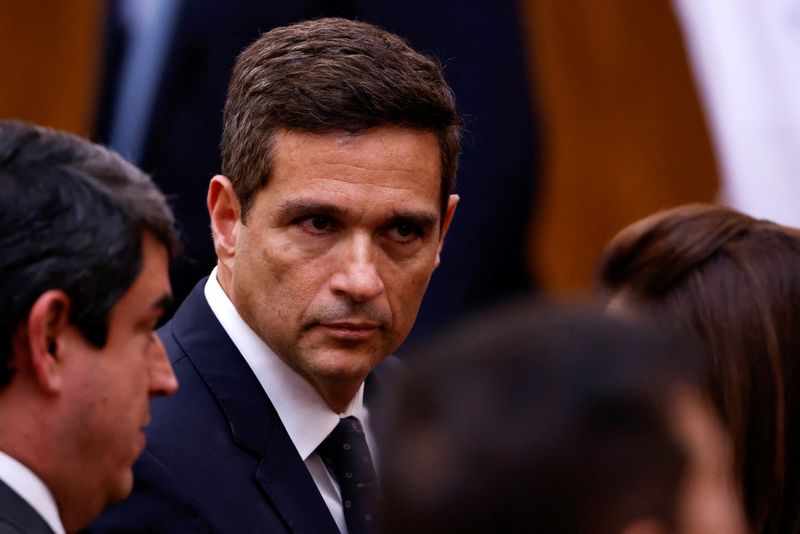By Marcela Ayres
BRASILIA (Reuters) - Brazil's central bank chief Roberto Campos Neto indicated on Thursday he supports adopting a continuous time frame for the monetary authority to pursue inflation targets, ditching the current system of tracking a calendar year.
Speaking at a press conference in Brasilia, Campos Neto said that would be an "interesting improvement" as central bank studies carried out since 2017 showed the continuous target to be "more effective" in assessing the goal's fulfillment.
His remarks came as Brazil's National Monetary Council (CMN), the country's top economic policy body, is scheduled to meet later on Thursday to set its 2026 inflation target.
The CMN is expected to decide on a 3% target for 2026, the same as in 2024 and 2025, but markets are closely watching the meeting as there is a growing belief the council may ditch annual targets in favor of the longer-term models.
"It's an improvement, although we still need to understand how that would be measured," Campos Neto said of the potential change.
He argued that in the past the government has taken measures specifically aimed at aligning the official inflation index to targets in a given calendar year, which was "bad" and implied less smooth monetary cycles.
Campos Neto is one of the council's three members, alongside Finance Minister Fernando Haddad and Planning Minister Simone Tebet.
Haddad has publicly supported changing the time frame, arguing a longer-term approach provides more room to accommodate price shocks without requiring monetary tightening.
Campos Neto also said at the press conference that policymakers do not think there was inconsistency between the statement and the minutes of their latest policy meeting.
He added the statement had already left the door open for monetary easing ahead.
The central bank held interest rates at a cycle-high of 13.75% for the seventh consecutive policy meeting last week.

While the bank no longer mentioned the possibility of resuming hikes in its statement, policymakers stressed that future steps would be data-dependent, frustrating many who were expecting a clear signal for upcoming rate cuts given the more favorable inflation outlook.
The minutes from the decision also showed that most policymakers see the possibility of what they called a "parsimonious" rate cut at the next meeting in August as contingent upon a more benign inflation scenario.